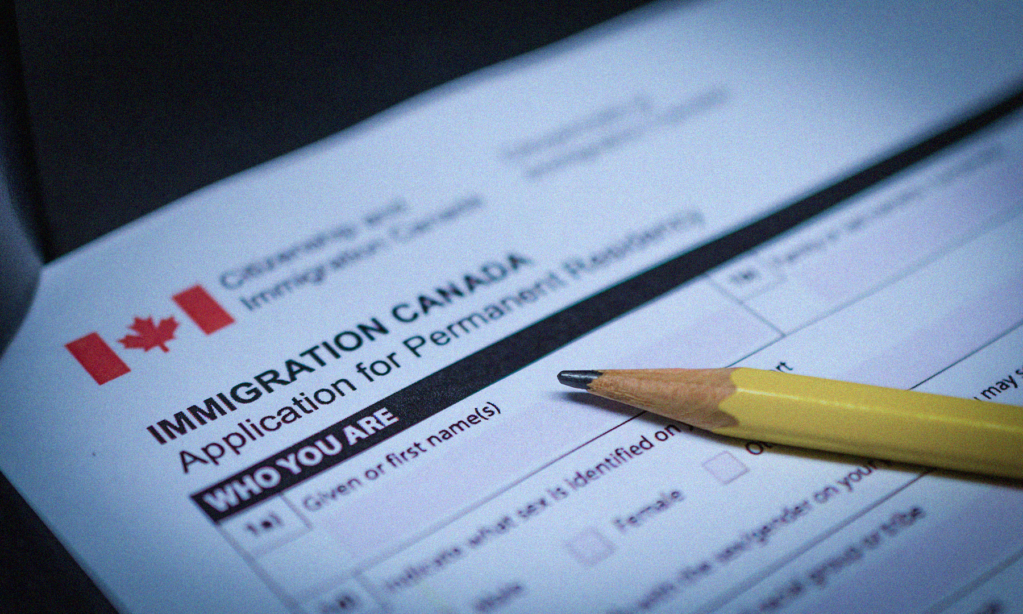In 2022, Canada’s job vacancy rate surged to a new record: one million jobs went unfilled. Meanwhile, our population continues to age and the workforce is shrinking.
Labour and skills shortages are growing more acute in every sector. Policy-makers are looking to increase immigration intake levels alongside streamlined measures to get more newcomers into the labour force as a fast-track solution to complex, long-standing problems.
The federal government will soon make changes to the selection of economic immigrants to enable newcomers to swiftly meet the urgent needs of the economy. For the most part, however, Immigration, Refugees and Citizenship Canada (IRCC) has provided only the broad strokes of the changes, leaving many questions unanswered.
Upcoming changes to the express entry system
Under the current express entry system, immigration candidates receive points based on factors such as their language competency in the two official languages and work experience. IRCC then ranks candidates under a Comprehensive Ranking System (CRS); those who rank highest receive an invitation to apply for permanent residency.
To respond to economic and demographic needs more effectively, Bill C-19 introduced major changes to express entry in June 2022 by amending the Immigration Refugee Protection Act.
The minister can now issue ministerial instructions, outside of parliament, to select candidates from the express entry pool who meet specific economic needs. A higher CRS score would not be the only factor in selecting immigrants. Starting this spring, IRCC will prioritize candidates with specific skills or work experience.
IRCC Minister Sean Fraser will identify and prioritize occupational groups based on economic needs for each round of invitations. In one of his press conferences, he signalled building trades, health care, and the services sector. These are also the sectors with the highest job vacancies.
IRCC will publish the economic goal of each invitation round and the selection criteria on its website. The minister will report to parliament annually on the outcomes of these category-based selections.
As required by Bill C-19, Minister Fraser engaged in public consultations in late 2022 and sought recommendations on three key issues: selecting candidates based on work experience in a particular occupation or sector, transitioning international students and temporary workers to permanent residence, and selecting francophone and bilingual candidates.
Underutilization of immigrant talent is a serious and long-standing problem in Canada. Many immigrants are unable to find work in the same sector and at the same level as their previous work experience. Without a concrete plan to address this problem, upcoming changes to the express entry draws and immigration levels may add more immigrants to a precarious labour market supply.
Many have a slim chance of receiving an invitation to permanent residency, mainly because their occupation, education level, and language skills do not meet the eligibility criteria of the immigration programs managed under express entry.
Pathways to permanent residency for those with temporary status
IRCC also plans to utilize the revamped express entry system to make the path from temporary to permanent residency more streamlined for work permit holders and international students.
Holding draws focused on individuals with temporary status provides IRCC with an opportunity to look beyond the rigid dichotomy of so-called “high-skill” and “low-skill” jobs and, instead, to focus on “essential skills”.
In the current system, workers in so-called “low-skilled” jobs are disproportionately racialized. Many have a slim chance of receiving an invitation to permanent residency, mainly because their occupation, education level, and language skills do not meet the eligibility criteria of the immigration programs managed under express entry. But as the pandemic has shown, these workers are essential to the economy and fulfill long-term needs in sectors with ongoing demand.
Temporary status holders are also ineligible for federally funded settlement services. This erects additional barriers to navigating the immigration system and accessing essential support for social and economic integration.
To build a more inclusive and equitable immigration system, IRCC should revise the eligibility requirements of the settlement services and the programs managed by express entry. Otherwise, the system will continue to deprive thousands of temporary status holders of the opportunity to transition to permanent residency, despite their significant contributions to the economy.
What do these changes mean?
While the changes to the express entry system are both welcome and necessary, there are reasons to be concerned.
Transparency
Category-based selections can come at the cost of transparency. For example, how frequently will the minister hold consultations? Who or what would determine the major labour market needs? Would a representative and balanced committee provide recommendations?
When the government makes use of ministerial instructions, the goal is to act swiftly, but the cost of swift action is little meaningful parliamentary or public oversight. Reporting to parliament on an annual basis, after the fact, reduces accountability. Critics call for the creation of an arms-length oversight mechanism that would scrutinize how IRCC is managing the express entry system and, more generally, the immigration system.
Predictability
The existing express entry system provides candidates with the ability to plan for the long term. For example, a candidate may acquire additional educational credentials or improve their language skills to increase their chances of immigration.
By contrast, category-based selections may reduce predictability and—unless details of these selections are shared with the public well in advance—might impact candidates’ ability to plan for the long term.
Similarly, businesses and communities lack details about category-based selections and might struggle to make informed decisions and develop their own short- and long-term integration strategies.
Adding volatility to an already complex system can make it more challenging to navigate.
Only one in five internationally trained engineers in Canada works in their field of training.
Underutilization and access to the labour market
Immigrants face significant barriers to employment in Canada—including the devaluation of their educational credentials and experience, bias in favour of Canadian work experience rather than assessment of competencies, limited social capital, and xenophobia and racism.
Despite the health care workforce crisis, nearly half of internationally educated health care workers are either unemployed or employed in positions that do not make full use of their skills, education, and experience.
Only one in five internationally trained engineers in Canada works in their field of training.
Immigrants—especially those who are racialized—are overrepresented in jobs with low educational requirements and pay, despite possessing university credentials. Over 25 per cent of university-educated immigrants work in jobs that require, at most, a high school diploma, which is twice as high as the underutilization of their Canadian counterparts.
Changes to express entry need to be coupled with concrete policies addressing the underutilization of immigrants’ skills; policies that should strive for commensurate labour market integration.
Without addressing the labour market integration needs of immigrants who are already here, planning for additional newcomers to enter the labour market risks accelerating underutilization.
Building a better immigration system
Adapting an integrated approach that focuses not only on bringing immigrants to Canada but also on labour market integration can improve outcomes.
The federal government should create an accessible, transparent, and ongoing consultation process, and make a concerted effort to consider the interests of stakeholders representing different groups in the development and implementation of category-based selections. It should ensure that category-based selections are guided by the principle of nation building, which includes the development of a strong economy, a nurturing society, and resilient, welcoming communities.
In order to achieve those objectives, the federal government should:
- Create an independent oversight body to monitor category-based selections and report to parliament.
- Release the category-based selection plans in advance and report on the profile of candidates in the express entry pool after each round of invitations (for example, the number of candidates in particular occupational category).
- Improve access to timely, disaggregated labour market information and tools so that immigrants and businesses are able to make informed decisions about training and employment options.
- Collaborate with provincial or territorial governments and regulatory bodies to create pathways to ensure that immigrants who have regulated occupational experience can be quickly and effectively assessed and integrated into the labour market.
- Increase investments in newcomer-centred employment programs and allocate adequate funding for settlement services. Further, extend the eligibility for federally funded settlement services to temporary status holders.
- Promote competency-based assessment and hiring practices among employers as critical keys to recognizing needed and available talent.
- Take concrete measures to address systemic and rising xenophobia and racism. Also, develop accountability measures and provide funding to community-based anti-racism and anti-hate initiatives.
- Conduct evaluations of the express entry system on set intervals to assess the effectiveness of the system in terms of immigrants’ labour market integration and the country’s economic needs.
The objectives of the category-based selections in express entry cannot be fully achieved without creating a transparent and predictable implementation system, and without addressing the issue of underutilization of immigrant talent. Coupling category-based selections with these two measures will help immigrants thrive in Canada and help the country to meet its economic needs more effectively.







